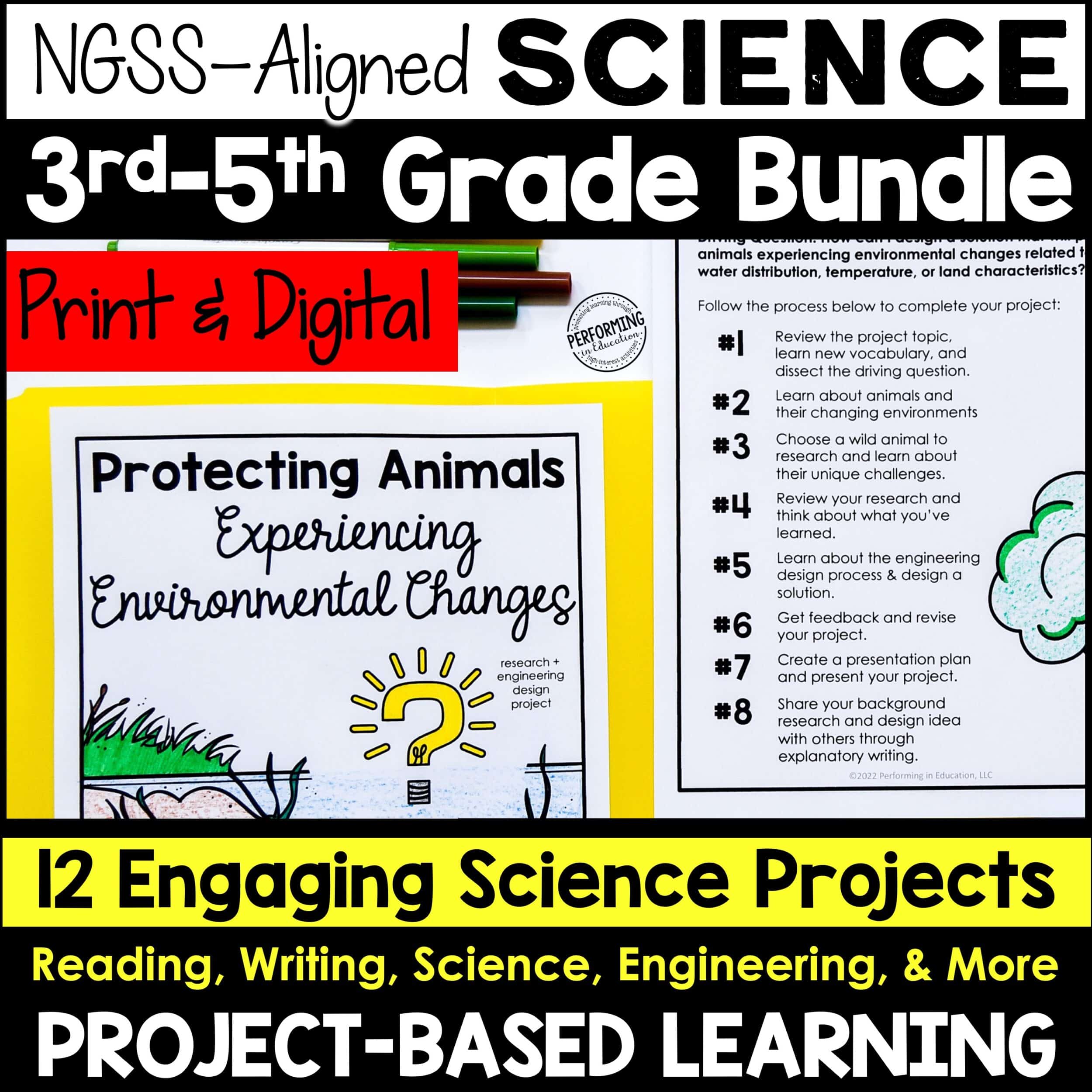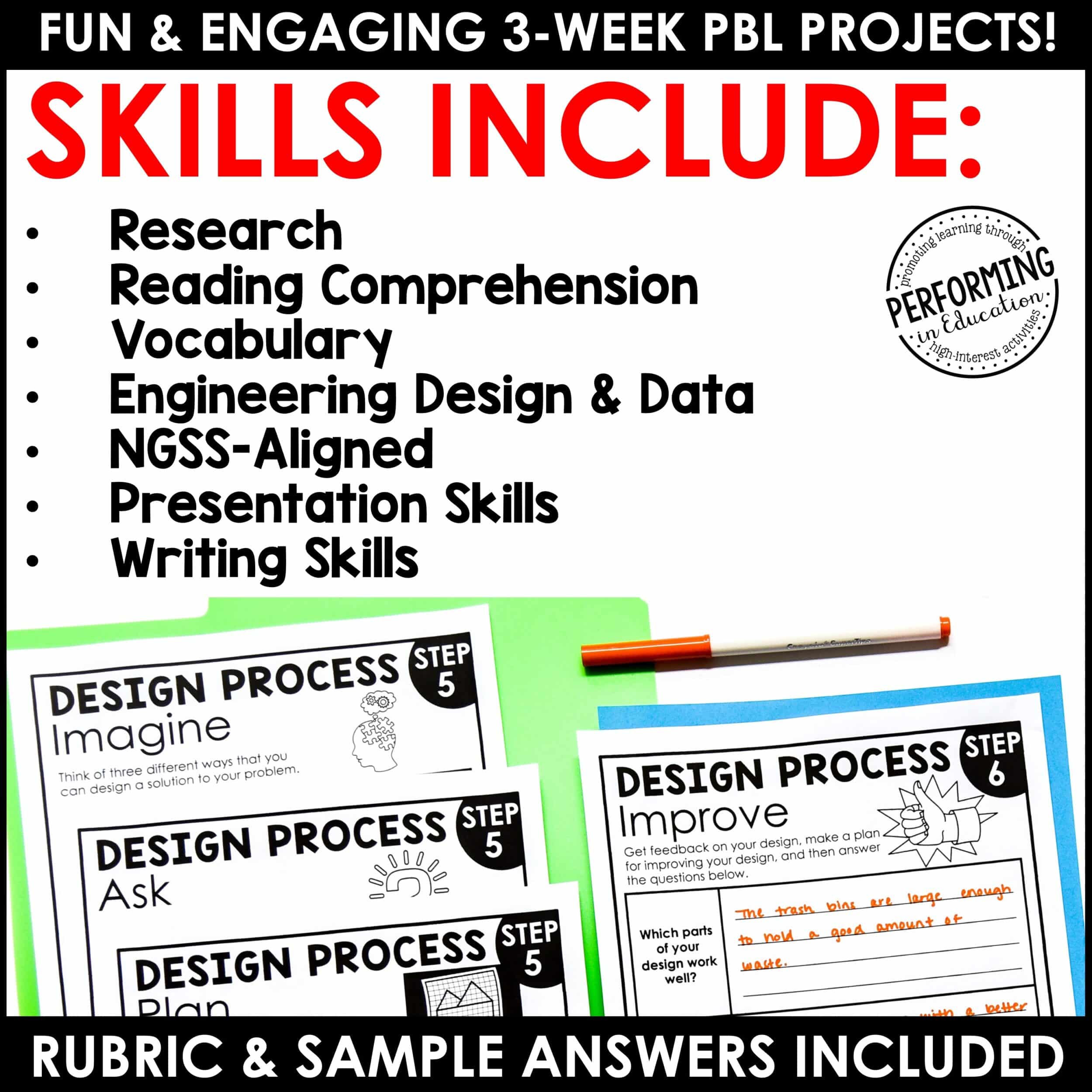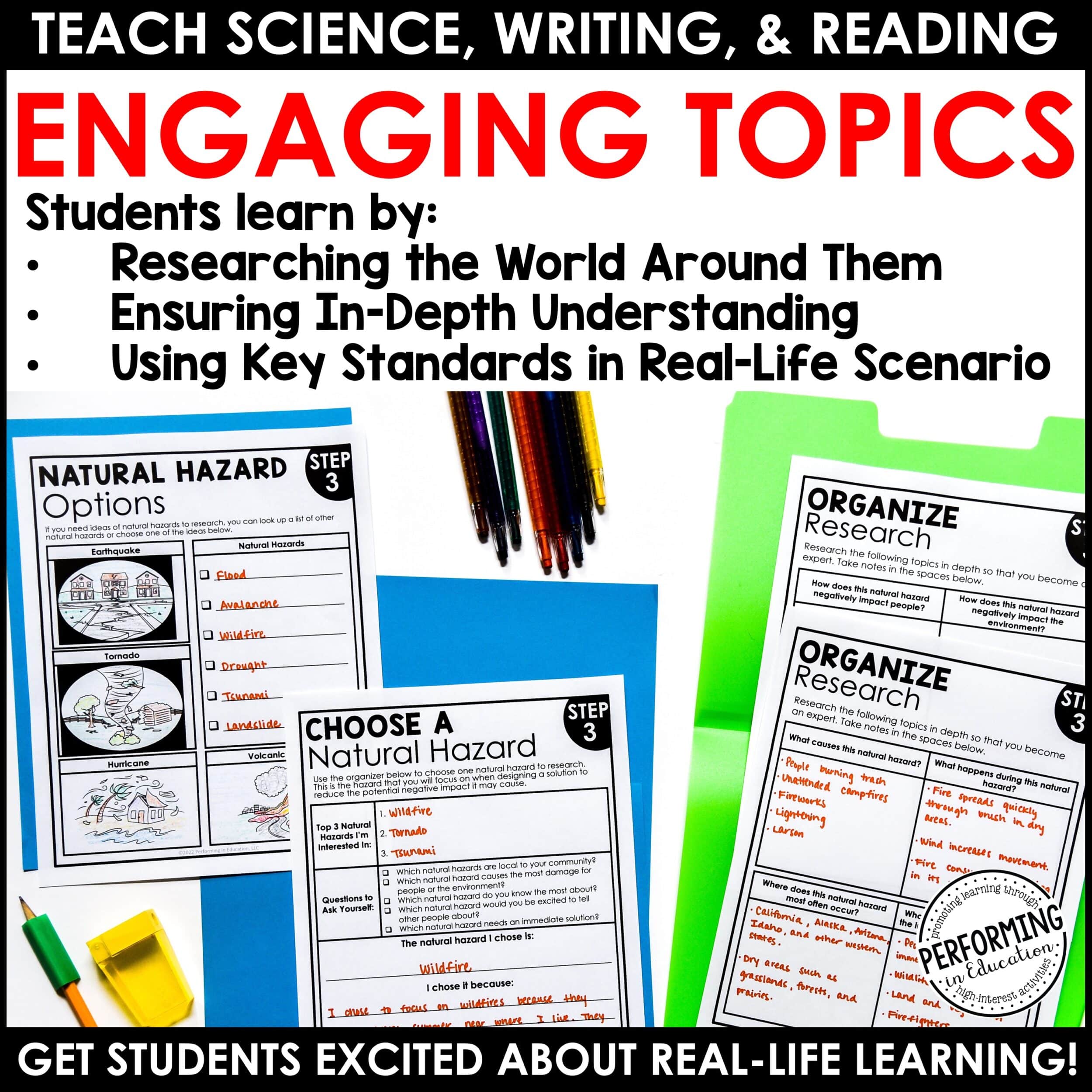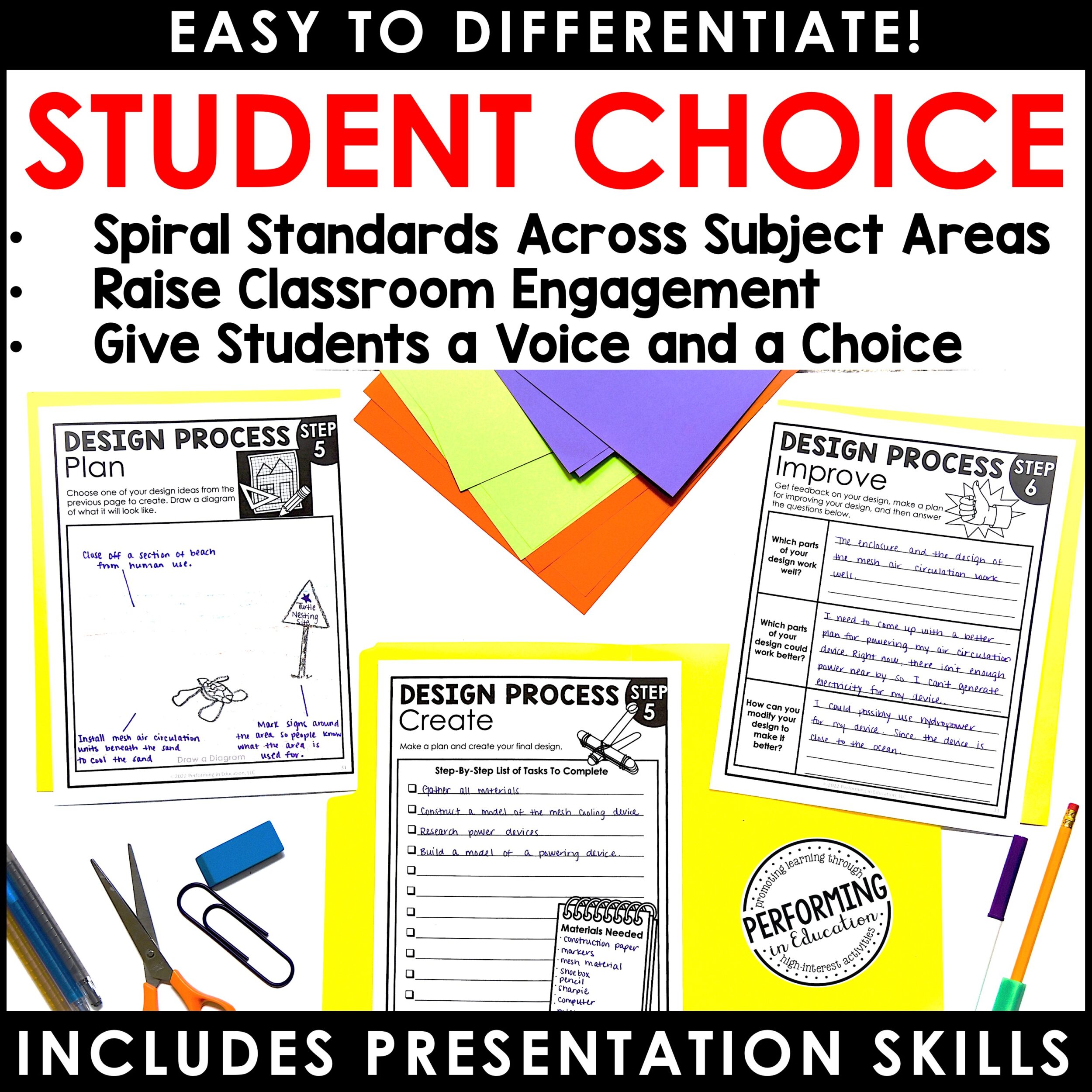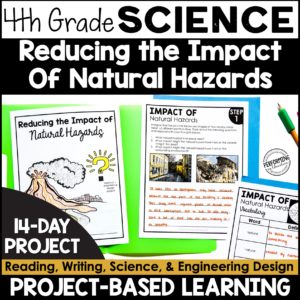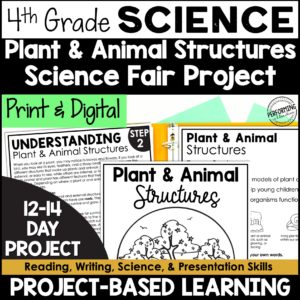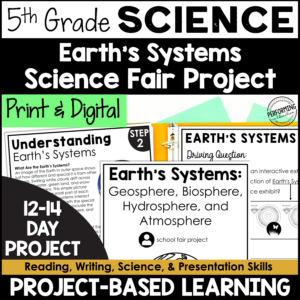This is a bundle of 12 PBL science units for 3rd-5th grade. These 3-week project-based learning (science-focused) research-based units are the perfect way to teach reading, writing, research skills, and science in one engaging, real-world unit. Your students will use key standards, such as research, reading comprehension, and engineering design in a real-life scenario. The best part about PBL is that student choice and differentiation are built in!
3rd Grade Driving Questions:
- How can I communicate information on typical weather conditions with people in the community?
- How can I design a solution that will protect animals experiencing environmental changes related to water distribution, temperature, or land characteristics?
- How can I design an experiment for my class to model the cause-and-effect relationship between two objects with an electric or magnetic interaction?
- How can we share information on life cycles and traits to help students at our school better understand plants and animals?
4th Grade Driving Questions:
- How can I design a solution that will reduce the impact of natural hazards such as earthquakes, floods, tsunamis, or volcanic eruptions on humans?
- How can I communicate information on the effects of weathering and the rate of erosion with people in the community?
- How can I design an experiment for my class to test a device that converts energy from one form to another?
- How can we create models of plant and animal structures to help young children learn about how various organisms function?
5th Grade Driving Questions:
- How can I construct a model that teaches my community about the movement of matter among plants, animals, decomposers, and the environment?
- How can I communicate information on patterns in Earth’s systems with people in the community?
- How can I design an experiment to prove to others that the total weight of matter is conserved even when it changes forms?
- How can we create an interactive exhibit showcasing the interaction of Earth’s Systems for a science exhibit?
Banish those boring worksheets and get your students excited about real life learning! These projects cover the following skills:
- Research
- Reading Comprehension
- Collaboration
- Communication
- Writing
- Design & Creativity
- Critical Thinking
- Engineering Design Process
- Data Displays
Included in this Resource:
- Lesson Outline
- Sample Pacing
- Teacher Guide with Lesson Plans
- Scaffolded Research Notes
- Engineering Design Process Overview
- Rubric & Sample Answers
Plus, a BONUS digital version is included as well!
NGSS Standards Covered:
- NGSS.5-LS2-1: Develop a model to describe the movement of matter among plants, animals, decomposers, and the environment.
- 5-ESS1-2: Represent data in graphical displays (bar graphs, pictographs and/or pie charts) to reveal patterns of daily changes in length and direction of shadows, day and night, and the seasonal appearance of some stars in the night sky.
- NGSS3-5-ETS1-1 Define a simple design problem reflecting a need or a want that includes specified criteria for success and constraints on materials, time, or cost.
- NGSS3-5-ETS1-2 Generate and compare multiple possible solutions to a problem based on how well each is likely to meet the criteria and constraints of the problem.
- NGSS4-ESS3-2 Generate and compare multiple solutions to reduce the impacts of natural Earth processes on humans. A variety of hazards result from natural processes (e.g., earthquakes, tsunamis, volcanic eruptions). Humans cannot eliminate the hazards but can take steps to reduce their impacts.
- NGSS.4-PS3-2: Make observations to provide evidence that energy can be transferred from place to place by sound, light, heat, and electric currents.
- NGSS.4-PS3-4: Apply scientific ideas to design, test, and refine a device that converts energy from one form to another.
- NGSS.3-LS4-4
Make a claim about the merit of a solution to a problem caused when the environment changes and the types of plants and animals that live there may change. Examples of environmental changes could include changes in land characteristics, water distribution, temperature, food, and other organisms. Assessment is limited to a single environmental change. Assessment does not include the greenhouse effect or climate change. - 3-ESS2-1: Represent data in tables and graphical displays to describe typical weather conditions expected during a particular season.
- 3-ESS2-2: Obtain and combine information to describe climates in different regions of the world.
- NGSS.3-PS2-1: Plan and conduct an investigation to provide evidence of the effects of balanced and unbalanced forces on the motion of an object.
- NGSS.3-PS2-2: Make observations and/or measurements of an object’s motion to provide evidence that a pattern can be used to predict future motion.
- NGSS.3-PS2-3: Ask questions to determine cause and effect relationships of electric or magnetic interactions between two objects not in contact with each other.
- NGSS.3-LS1-1: Develop models to describe that organisms have unique and diverse life cycles but all have in common birth, growth, reproduction, and death.
- NGSS.3-LS3-2: Use evidence to support the explanation that traits can be influenced by the environment.
- NGSS. 4-LS1-1: Construct an argument that plants and animals have internal and external structures that function to support survival, growth, behavior, and reproduction.
- NGSS.5-ESS2-1: Develop a model using an example to describe ways the geosphere, biosphere, hydrosphere, and/or atmosphere interact.
